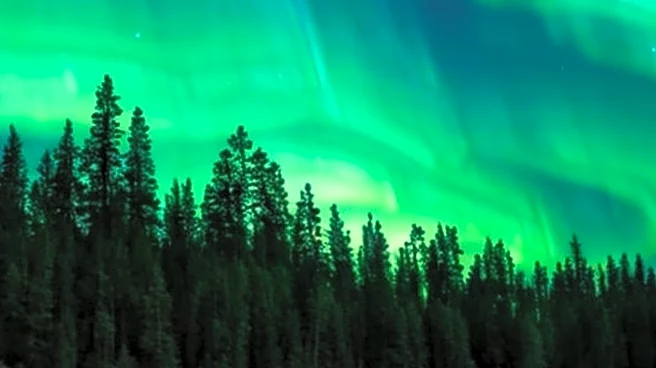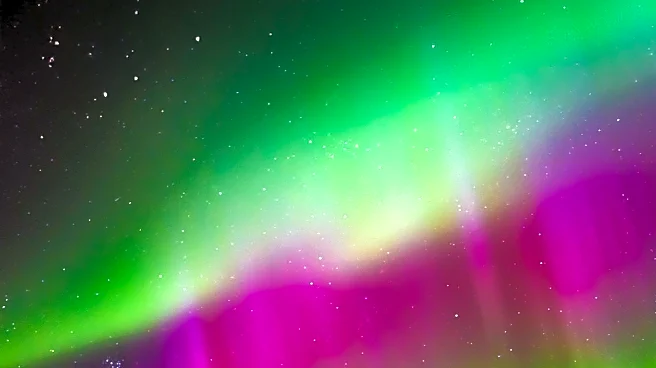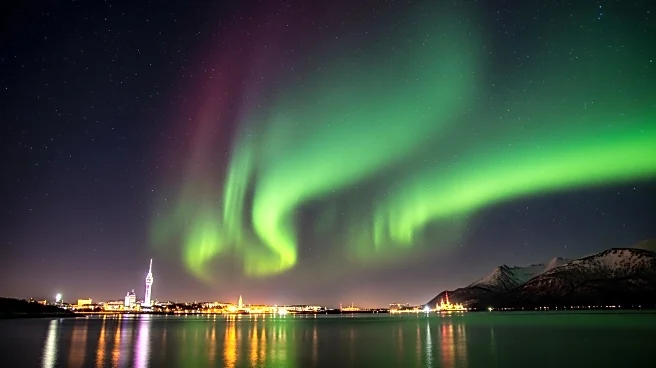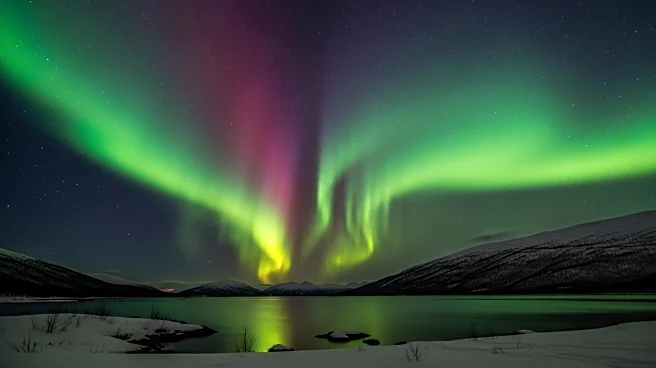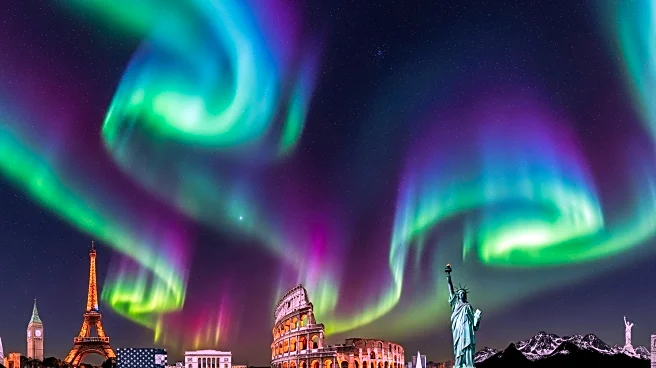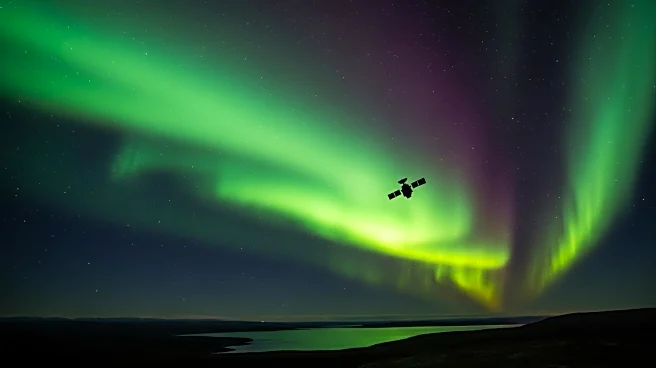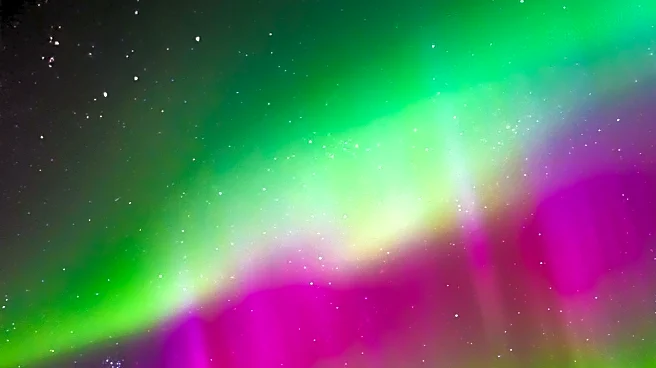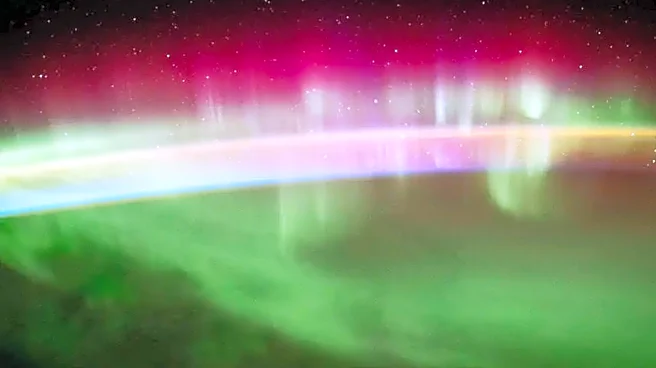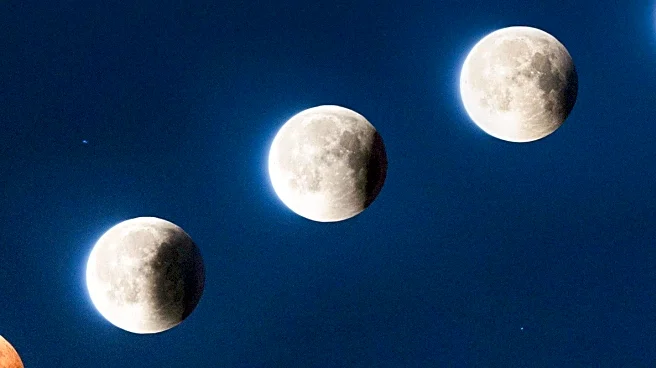What's Happening?
A powerful solar flare is set to unleash a geomagnetic storm, potentially pushing the aurora borealis into northern Oregon. NOAA’s Space Weather Prediction Center has issued a G2 to G3 geomagnetic storm watch, with a chance of reaching G4 levels. This storm originates from a coronal mass ejection, described as a 'cannibal CME,' where one CME overtakes another. The peak of Solar Cycle 25 increases the likelihood of auroral activity reaching lower latitudes.
Why It's Important?
The potential visibility of the northern lights in Oregon offers a rare opportunity for residents to witness this natural phenomenon. It highlights the impact of solar activity on Earth's magnetic field and the resulting geomagnetic storms. This event underscores the importance of monitoring space weather and its implications for both scientific research and public interest in astronomy.
What's Next?
Aurora watchers are advised to monitor the planetary K-index and prepare for viewing the northern lights between 11 p.m. and 2 a.m. Pacific time. The event may lead to increased public interest in space weather phenomena and further engagement with NOAA's forecasts and educational resources.
Beyond the Headlines
The occurrence of 'cannibal CMEs' and their impact on geomagnetic activity may prompt further research into solar storms and their effects on Earth's environment. This event highlights the interconnectedness of solar and terrestrial phenomena, potentially influencing scientific studies and public awareness.
